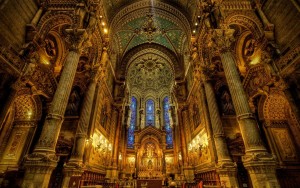 Ever since I’ve learned about the Camino de Santiago – a centuries-old pilgrim route to Santiago de Compostela, where the cathedral housing the remains of St. James the Greater is located – I’ve been obsessed with it. When I was preparing to leave for Pamplona, Spain to pursue further studies, walking the Camino figured in my list of planned extra-curricular activities.
Ever since I’ve learned about the Camino de Santiago – a centuries-old pilgrim route to Santiago de Compostela, where the cathedral housing the remains of St. James the Greater is located – I’ve been obsessed with it. When I was preparing to leave for Pamplona, Spain to pursue further studies, walking the Camino figured in my list of planned extra-curricular activities.
Unfortunately, I could not find a walking companion, and although women have been said to walk the Camino alone safely, I did not want to take any chances. I almost gave up on prospects of seeing Santiago de Compostela, until I realized that flying there instead of walking won’t make me any less a pilgrim. I won’t get a pilgrim’s certificate, for sure, but just the same I’ll get to honor St. James. So after I finished my studies, and with a few days remaining before leaving Spain for good, I flew to Santiago de Compostela.
Flying turned out to be no less penitential. I would have chosen a hike through the countryside anytime over a long bus ride to the airport, an interminable wait for a delayed flight, and the other inconveniences of air travel.
Hungry and tired, I arrived at Santiago de Compostela late in the afternoon. After sampling some of the famous Galician seafood and the tarta de Santiago, an almond cake, for dessert, I sank into my bed to sleep.
When I went to the cathedral the next morning, I was awed by its majestic spires and the elaborate stone work on the facade. I could imagine the emotions of those who arrived walking or cycling all the way from France or some other far-off place. Indeed, in the square in front of the cathedral, I saw a group of walking pilgrims – identified by their knapsacks, trekking poles, and scallop shell necklaces — hugging each other in the sheer joy of having finally arrived, another group having jump shots taken of them. A cyclist shouted for joy upon dismounting his bicycle; another solo pilgrim just stood at the corner of the square, in awe and lost in her own thoughts.
Inside, the cathedral was just as awe-inspiring, with the elaborately decorated side chapels, the botafumeiro (a giant censer which is worked by a network of pulleys), and the image of St. James in the main altar. I fell in the line to see St. James’ tomb, knelt at the kneeler in front of it, and prayed. Then I walked around, trying to pray but unable to say anything except, “God, nice place you’ve got here!”
After viewing the inside of the cathedral, I checked out its museum of sacred objects and tapestries, as well its exhibit on the Codex Calixtinus, an illustrated medieval manuscript compiling devotions and liturgies devoted to St. James, accounts of miracles through his intercession, the history of the Camino, guides for pilgrims, and music. The codex had been miraculously saved from a fire, a shipwreck, and thefts, the latest of which happened in 2011 after which it was recovered in July this year through the intercession of St. James.
I felt I had to visit the cathedral again in the afternoon, to pray more calmly and probably to attend the 7:30 PM mass. I made the mistake of leaving the cathedral shortly before the mass, and found it locked when I went back. But for some reason, I did not want to leave cathedral square. There I stood for a long time, enjoying the good weather and observing the pilgrims’ coming and going.
The next day, I had to catch the afternoon flight to Bilbao and then take the bus back to Pamplona. Because I had time in the morning, I went back to the cathedral and the cathedral square. What made me keep going back to the cathedral, without wanting to leave?
Again, the pilgrims’ various expressions of joy upon finally arriving at Santiago de Compostela moved me. What motivates millions pilgrims, even non-believers, to take the long arduous journey?
Motives vary from pilgrim to pilgrim, but one thing is certain: it’s impossible to walk the Camino and remain unmoved. One blogger who has done the Camino several times writes that she did not start out on a religious or spiritual journey but it ended up that way. She attributes it to “the Camino at work”.
Whatever the Camino represents to each pilgrim, for everyone it is more than just good exercise, a “bucket list” item, and a rich cultural experience, although it is definitely those as well. It is an opportunity to receive blessings from St. James, who most likely is the one himself who calls the pilgrims to travel his way.
More importantly, Santiago de Compostela and other pilgrimage sites remind us that our faith is real, that although our redemption transcends time and space, it happened in time and space. These sites are tangible reminders of eternity, which we need on this side of heaven.






3 thoughts on “A Pilgrim-Watching Pilgrim in Santiago de Compostela”
At least you get to experience a once-in-a-lifetime journey immortalised in a movie entitled “The Way.”
Ooh! I just did a whole analysis of its façade and how it’s Baroque in comparison to the Romanesque plan. History case study. It was actually enjoyable to trace again and again.
~Ink
Pingback: Sacred Music Pope Benedict XVI EF Mass Jesus Wife Forgery | Big Pulpit